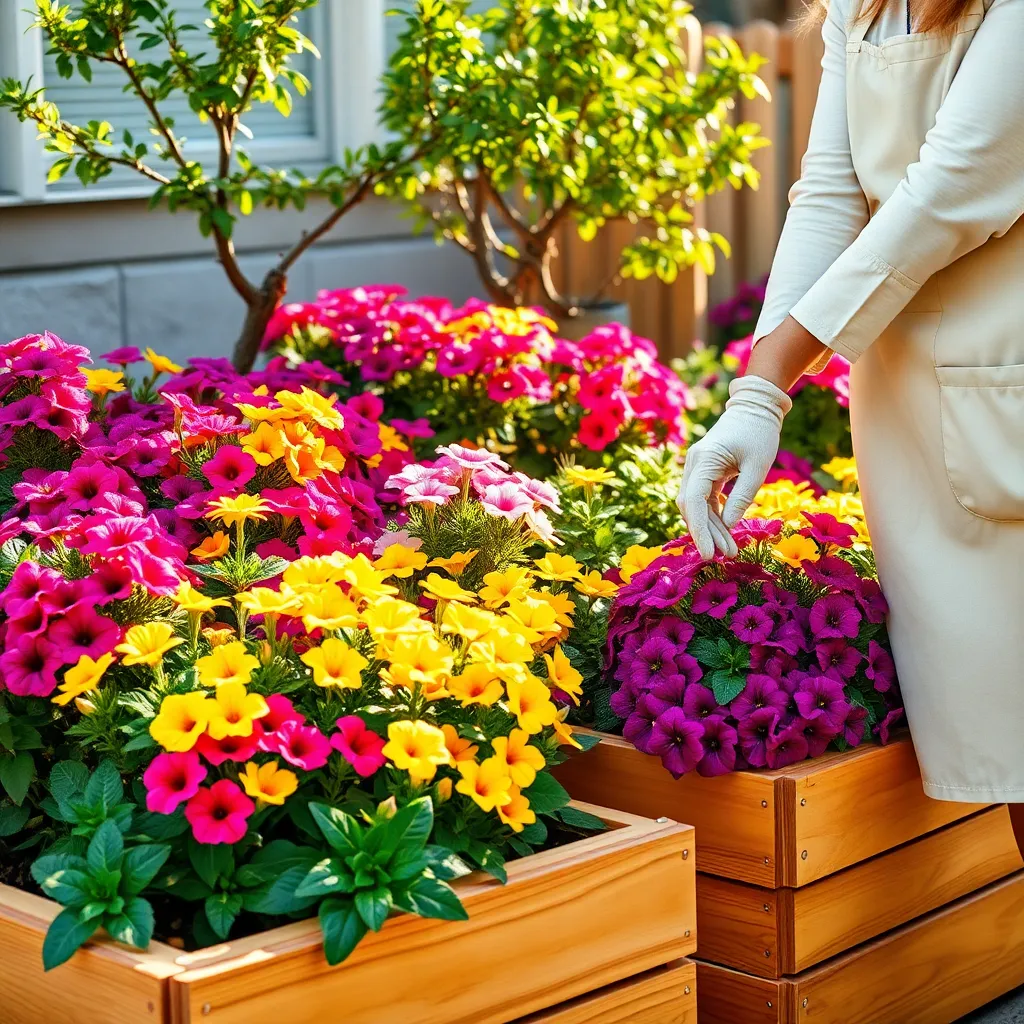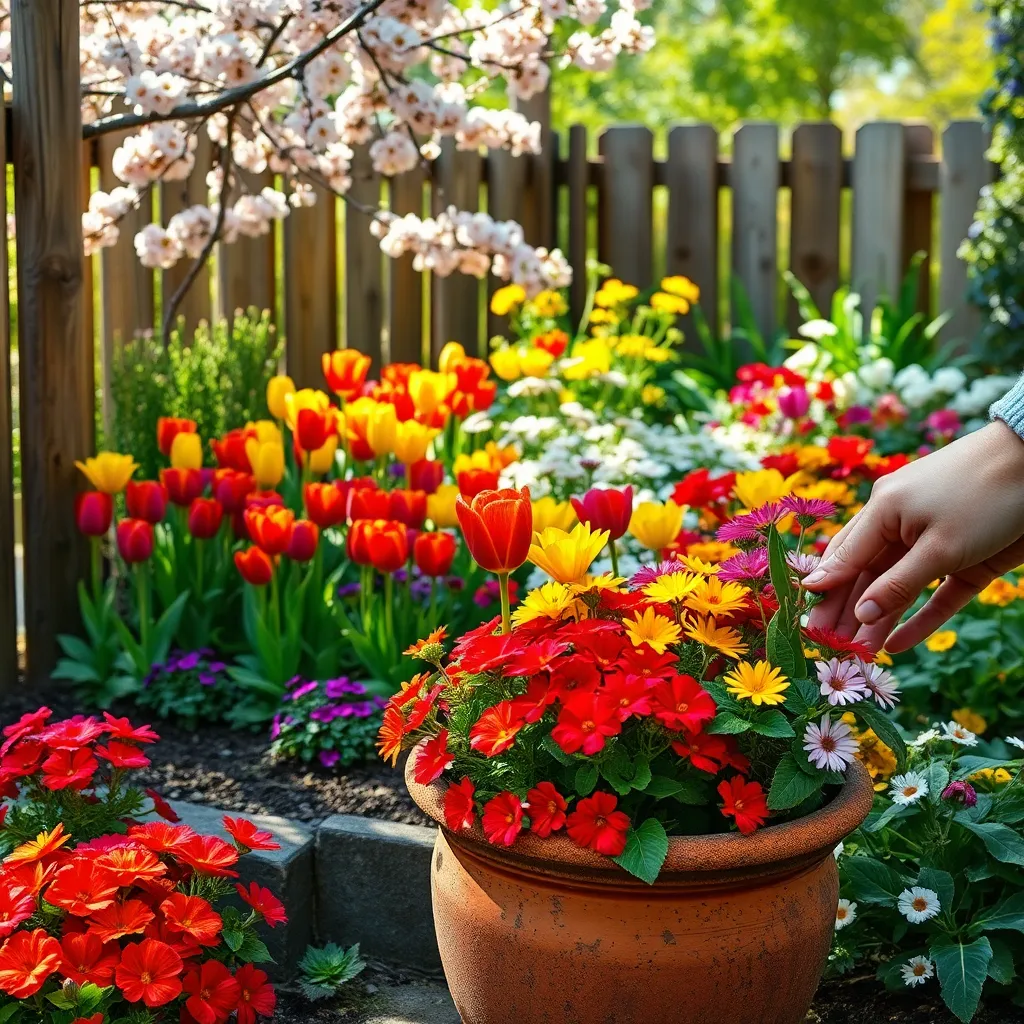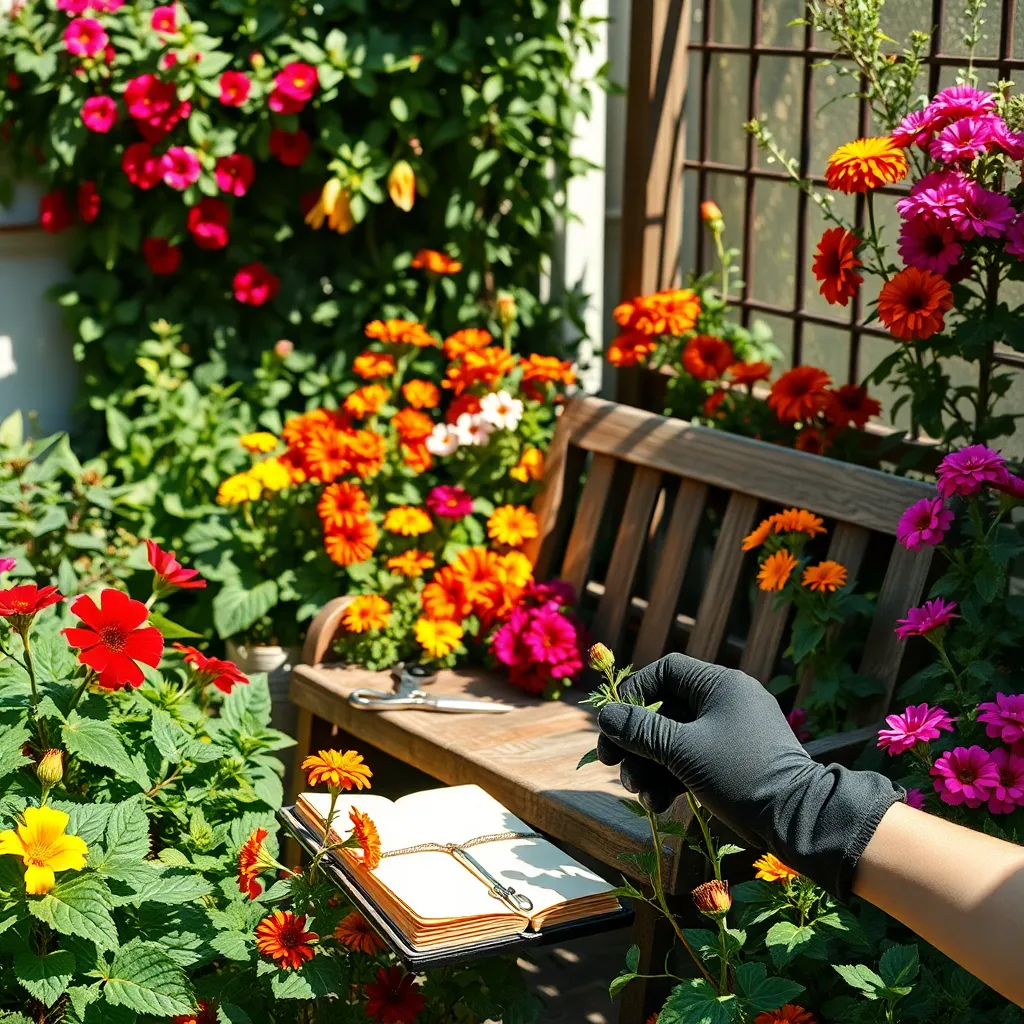Whether you’re a budding green thumb or a seasoned horticulturist, the allure of a vibrant garden is something we all cherish. Yet, when space is at a premium, creating a lush, colorful oasis might seem like a daunting challenge. But fear not! Even the smallest of garden spaces can burst with color and life, inviting beauty and biodiversity into your home.
For those just starting their gardening journey, selecting the right flowers for a compact setting can transform your garden into a dazzling display. Experienced gardeners will also find joy in experimenting with unique plant combinations that maximize aesthetic appeal while making the most of limited space. In this article, we will explore a variety of radiant blooms perfect for small gardens, offering practical tips and creative ideas to inspire your green sanctuary.
You’ll discover how to choose flowers that not only thrive in restricted environments but also complement each other in color and texture. We’ll delve into the art of creating visual interest with layered plantings and discuss how to maintain a harmonious balance between different species. With our guidance, you’ll be equipped to transform your small garden into a vibrant tapestry of color, all while nurturing your passion for gardening.
Choosing Vibrant Compact Varieties

To make the most of a small garden space, consider choosing compact flower varieties that offer vibrant colors. Compact varieties can provide a burst of color without overwhelming the limited area you have.
One excellent choice for compact spaces is the dwarf zinnia, which thrives in full sun and well-drained soil. These hardy plants require regular watering, especially during dry periods, to maintain their bright blooms.
Alternatively, consider planting compact marigolds, which are not only colorful but also act as natural pest repellents. Marigolds prefer loamy soil enriched with organic matter and need to be deadheaded regularly to encourage continuous blooming.
For a touch of elegance, dwarf lavender can be an ideal choice, offering both fragrance and color. To ensure healthy growth, plant lavender in a sunny spot with well-draining soil, and avoid overwatering to prevent root rot.
Incorporating compact varieties also allows for creative layering, adding depth to your small garden. By mixing different textures and colors, you can create a visually appealing display that captures attention despite the limited space.
Advanced gardeners can experiment with container gardening, which allows for easy rearrangement and provides optimal growing conditions. Ensure containers have adequate drainage and use a high-quality potting mix to support the vibrant growth of your compact plants.
Maximizing Color in Limited Space

To make the most of limited space, consider vertical gardening techniques that add layers of color. Wall-mounted planters or hanging baskets can transform bare walls into vibrant living artworks, effectively utilizing space that might otherwise be overlooked.
Choose flowers that thrive in compact environments like nasturtiums or petunias, which can cascade beautifully over the sides of containers. These flowering plants not only provide a splash of color but also attract pollinators, enhancing the health of your garden ecosystem.
Incorporating a mix of annuals and perennials can ensure a continuous display of color throughout the growing season. Annuals like marigolds offer immediate and bold blooms, while perennials such as dwarf irises provide reliability year after year.
For gardeners with a bit more experience, experimenting with layered planting can maximize both space and visual appeal. By planting taller varieties like snapdragons at the back and shorter ones like alyssum at the front, you create a tiered effect that displays each plant to its fullest potential.
Seasonal Blooms for Year-Round Appeal

To ensure year-round color in your small garden, choose a mix of plants that provide seasonal blooms. Start by selecting early spring bloomers like crocuses and daffodils, which thrive in well-drained soil and require full sun to partial shade.
As summer approaches, incorporate vibrant options like zinnias and marigolds. These sun-loving flowers require regular watering but ensure the soil is not waterlogged to prevent root rot.
For autumn, consider planting asters and chrysanthemums, which can add rich tones to your garden. They thrive best in fertile, well-drained soil and benefit from a layer of mulch to retain moisture and suppress weeds.
Winter need not be dull if you include hardy plants like hellebores and snowdrops. These resilient flowers do well in partial shade and can tolerate cold temperatures, providing a splash of color in the colder months.
Creative Color Combinations

Pairing colors creatively in a small garden can make a huge impact, drawing the eye and adding layers of interest. One effective approach is using complementary colors, such as pairing purple lavender with yellow coreopsis, which can make each hue stand out more vividly.
To create a harmonious look, consider planting flowers with analogous colors, like red, orange, and yellow. This combination works well in sunny spots where marigolds and zinnias can thrive in well-drained soil, needing regular watering but avoiding soggy conditions.
For a more dramatic effect, use a monochromatic scheme by selecting different shades of the same color, such as various pinks found in roses, cosmos, and dianthus. These flowers generally prefer full sun and slightly acidic to neutral soil, which can be achieved by testing your soil pH and amending it as necessary.
Experimenting with textures can also enhance your color combinations; consider pairing the soft petals of peonies with the spiky blooms of salvia. Both plants enjoy full sun and moderately fertile soil, and regular deadheading will encourage continuous blooms throughout the season.
Maintenance Tips for Small Gardens

To maintain a vibrant small garden, start by regularly assessing the health of your plants. Look for signs of stress, such as wilting or discolored leaves, which may indicate issues with water, pests, or nutrients.
Consistent watering is crucial for small garden success, as these spaces often dry out faster than larger ones. It’s best to water deeply but less frequently to encourage roots to grow downward, reaching for moisture.
Mulching can greatly benefit small gardens by retaining moisture and suppressing weeds. Use organic materials like shredded bark or straw, which will decompose and enrich the soil over time.
Incorporate a simple routine of deadheading spent flowers to encourage continuous blooming. This not only keeps your garden looking tidy but also channels energy into producing new blooms rather than seeds.
Regular feeding is essential to keep your plants thriving, especially in a confined space where nutrients can be quickly depleted. Opt for a balanced, slow-release fertilizer to provide steady nutrients throughout the growing season.
Keep an eye on plant spacing to ensure adequate airflow, which helps prevent fungal diseases. If plants become overcrowded, consider thinning them out or trimming back overgrown sections.
For advanced gardeners, practice crop rotation in small raised beds to manage soil health and pest control. This technique helps break cycles of disease and improves soil fertility by alternating plant families each season.
Conclusion: Growing Success with These Plants
In “Colorful Flowers for Small Gardens,” we explored five key concepts that can enrich any relationship. First, understanding love languages helps partners express care in ways that resonate deeply. Second, the importance of active listening fosters genuine connection, while third, setting boundaries ensures mutual respect and preserves individuality. Fourth, cultivating shared interests strengthens bonds, and finally, practicing gratitude can significantly enhance relational satisfaction.
To immediately apply these insights, choose one concept to focus on today. Perhaps start with a heartfelt conversation using active listening or plan a simple activity that aligns with both your interests. These small steps can spark meaningful changes.
Remember to bookmark this article as a handy guide to revisit whenever you need a relationship boost. By keeping these principles at your fingertips, you’re setting the stage for enduring success and fulfillment in your relationships.
Looking forward, embracing these practices not only nurtures current connections but also lays a solid foundation for future relationships. Empower yourself with these tools, and watch your relationships flourish with color and joy. Save this guide to ensure you have a roadmap to relationship success whenever you need it.

